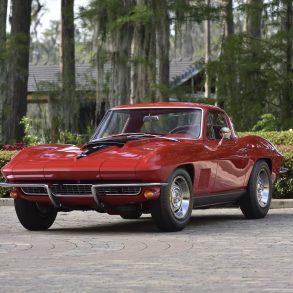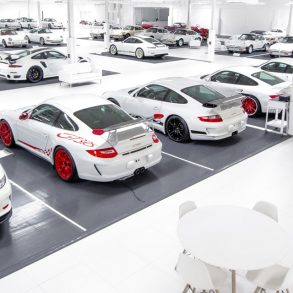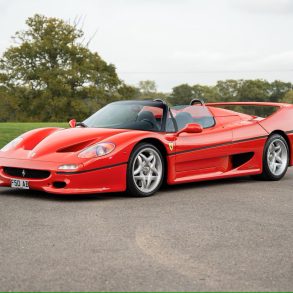
Started in 1964, the Reno Air Races feature multi-lap, multi-aircraft races between extremely high performance aircraft on closed ovoid courses which range between about 3 miles (Bi-Planes and Formula One) and about 8 miles (Jet, Unlimited) in length per lap. Aircraft in the Unlimited class, which consists almost entirely of both modified and stock World War II fighters, reach speeds of over 500 mph.
The 47th annual National Championship Air Races included several days of qualifying followed by five days of multi-aircraft heat racing, in addition to an air show featuring the Canadian Forces “Snowbirds” flying the Canadair CT-114 Tutor and an aircraft display on the ground. The theme for the Reno Air Races 2010 was “The Next Generation”, celebrating the rise of new competitors, new aircraft, and new speed records.
The Sunday races marked another historic day for the National Championship Air Races as the elite pilots at Reno-Stead Airfield took to the skies to compete for the coveted Breitling Gold championship. For the first time in event history, the Unlimited Gold championship race was grounded due to safety concerns caused by high winds.
“The decision to cancel our championship race was not an easy one but it was the right decision,” said Mike Houghton, president and CEO of the Reno Air Racing Association. “The safety of our pilots is our foremost concern and this decision was made along with class presidents, the Federal Aviation Administration and the Reno Air Racing Association.”
Although, there were high winds at the Reno-Stead Airfield throughout the afternoon, it was the crosswinds that caused concern. In working the on-site meteorologist, the Reno Air Racing Association became concerned for the safety of their pilots.
“We discussed the possibility of moving the Unlimited Gold race to Monday morning but realized we wouldn’t have enough manpower to do so,” said Houghton. “It takes several hundred volunteers, from pylon judges to safety and emergency personnel, to put on a race, and, with most of our core volunteers leaving on Sunday evening, it just wasn’t possible.”
According to official rules created by each individual race class, when a race is canceled for any reason, the winner is declared based on their qualifying positions. While some champions were crowned throughout the day, Due to high winds, the T-6 and Unlimited Gold race winners were declared based on their most recent gold heat. Time and speed from those race classes were taken from Saturday’s race.
Reno Air Race 2010 – Class Winners
Biplane Class Winner: Tom Aberle, Modified Mong Sport “Phantom”, 250.808 mph – The Biplane Class is represented by small, aerobatic aircraft like the Pitts Special, the Mong, and the Smith Miniplane, giving pilots a chance to apply their skills to racing on a 3.18-mile course at speeds exceeding 200 mph.
Sport Class Winner: Jeff LaVelle, Glasair III, 339.101 mph – The Sport Class highlights the new and innovative work being done in the development of high performance kit-built aircraft. Competition in the Class is fierce, with the rapid introduction of race-driven engine and airframe technology. Eligible aircraft include production model kit-built aircraft, of which 5 or more kits have been produced and delivered to customers by the manufacturer, powered by a reciprocating engine of 650 cubic inches or less. All aircraft must have a current FAA issued airworthiness certificate. Sport Class aircraft race on a 6.37-mile course at speeds reaching nearly 350 mph.
Super Sport Class Winner: Mike Dacey, Questair Venture “Bad Intentions”, 374.052 mph – As the Sport Class has continued to evolve, and more technologically-advanced and purpose-built racers become available, a new “Super Sport” Class has been created. The division of sport aircraft into “Sport” and “Super Sport” allows stock aircraft to compete against each other, while providing an opportunity for the thoroughbred racers to compete on a different race course, with different rules, at significantly higher speeds.
Formula One Class Winner: Steve Senegal, David Hoover AR-6 “Endeavor”, 248.022 mph – Formula One aircraft are all powered by a Continental O-200 engine (the same 100 hp engine used in a Cessna 150). Weights and sizes of every major engine part must be within stock limits. The cam profile and carburetion are strictly controlled. Race aircraft must have 66 square feet of wing area, weigh at least 500 pounds empty, and have a fixed landing gear and fixed pitch propeller. The fastest Formula One aircraft reach almost 250 mph on the 3.12-mile race course at Reno. Many Formula One aircraft are built by the pilots that race them and are a relatively inexpensive way to enjoy the excitement and satisfaction of air racing.
T-6 Class Winner: Dennis Buehn, T-6 “Midnight Miss III”, 241.247 mph – The T-6 Class features match racing between stock aircraft, including the original T-6 “Texan”, the Canadian-built “Harvard”, and the US Navy “SNJ” version aircraft. All of the T-6 variants are powered by the Pratt & Whitney Wasp R-1340-AN-1 air-cooled radial engine, which develops about 600 horsepower, and all have essentially the same airframe. The fastest T-6 aircraft generally post race speeds into the 220-230 mph range on the 5.06-mile course at Reno. Because the aircraft are all of the same type, the T-6 class provides some of the most exciting racing at Reno, with an emphasis on strategy and pilot skill rather than raw horsepower.
Jet Class Winner: Curt Brown, L-29 “Viper”, 515.582 mph – The Jet Class was inaugurated in 2002 as an invitation-only class, featuring match racing with Czech-built Aerovodochody L-39 “Albatros” jets, racing at speeds in the 400+ mph range. In 2004, sponsorship and interest had developed to the point where the Class was opened to participation by any qualified pilot and aircraft. The class currently is open to any non-afterburning aircraft with less than 15 degrees of wing sweep.
Unlimited Class Winner: Steven Hinton, P-51D Mustang “Strega”, 473.437 mph – The Unlimited Class is open to any piston-driven aircraft with an empty weight greater than 4500 pounds [the weight restriction was added in 2005]. Aside from a very few “scratch-built” aircraft, the Unlimited Class has generally been populated by stock or modified WWII fighters, the most-often-flown types including the P-51 Mustang, F-8F Bearcat, and Hawker Sea Fury. Aircraft speeds in the Unlimited Class exceed 500 mph.
For a complete list of official results and times, visit www.airrace.org.
Similar to the Reno Air Races 2009, Senior Photographer Dennis Gray documented this year’s National Championship Air Races, resulting in the following 100-image photo gallery that highlights the “World’s Fastest Motorsport” event.
Reno Air Races 2010 – Photo Gallery (Click image for larger picture and description)










Fantastic images Dennis! Great to see so many awesome aircraft turnout for this classic event.
Dennis,
Thank you for sharing your images of the Reno Air Races. As always your pictures are second to none. Wishing you and your family a safe and happy holiday.
Very nice work. This is on my list of events to attend in 2011. really looking forward to it.
Great job Dennis! Thanks for the indepth discussion about the weather cancellation, The images are fantastic and as usual I appreciate you identifying driver (pilot) and the equipment being driven (flown).